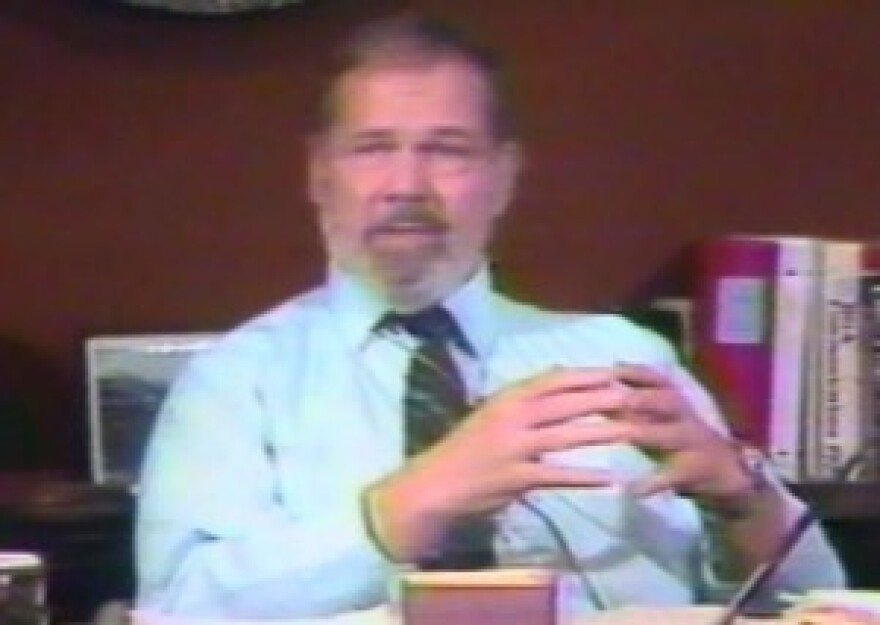Faced with a $3.5 billion budget deficit, many lawmakers are considering proposals that would tap the earnings of Alaska's massive Permanent Fund -- and reduce the Permanent Fund dividend.
As the state consider changes to these two very Alaskan institutions, it's worth taking a look back at how - and why - they were created.
This story starts in 1968. That's when Humble Oil and Arco announced they had struck oil on state land in Prudhoe Bay, and Alaska officially became a major oil state.
But it really gets interesting in 1969, with the state's lease sale at Prudhoe Bay. The auction brought in $900 million.
"Which was a pretty big deal, because thebudget was just about $100 million," said Cliff Groh, an attorney who worked on PFD legislation in the 1980s. "You have $900 million in one day! You can imagine the excitement."
Nobody had expected the sale to bring in that much. And yet, by the mid-70s, the money was gone.
"And a substantial number of people in Alaska felt it had been frittered away, wasted, or, to use a blunter term, pissed away," Groh said.
Groh himself doesn't think the money was wasted, noting that it was spent on services, especially education, in what was at that point a new and poor state. But the perception that Alaska's first oil bonanza had been squandered lent strength to a group of lawmakers who wanted the state save some of its oil wealth.
Among them was Jay Hammond, elected governor in 1974.
"You've got to remove the money, put it behind a rope, where you cannot utilize it for flamboyant expenditures," Hammond told KUAC in an interview in 1980.
Even before the Trans-Alaska Pipeline was built, Hammond and others argued that some of the coming windfall must be put away. But they couldn't agree on what it should be saved for.
A lot of ideas were thrown out, "ranging from dams to daycare centers," Groh said. "And some people did say, 'Save it for a rainy day.' But that was not the official statement that was offered...there just wasn't a consensus."
Groh stressed that one thing really wasn't a part of the conversation: the Permanent Fund dividend.
"There was a reference to cash payments thrown out as one part of it," he said. "But it was also in there with dams, daycare centers, and rainy day funds."
Ultimately, lawmakers simply agreed to take some portion of oil money off the table. Elmer Rasmuson, the first chair of the fund's board of trustees, said the Fund had a "negative purpose:" just don't spend the money now.
For Hammond, at least, one purpose was clear. He later wrote, "I wanted to transform oil wells pumping oil for a finite period, into money wells pumping money for infinity.”
And he had another idea in mind: the dividend check. If the Permanent Fund had many parents, the PFD was Hammond's baby.
Waldholz: Why did Hammond want it so much?
Tillion: Because it gave to everybody, from the poorest to the richest, a fair share of the money that they actually own.
Clem Tillion was one of Hammond's allies in the legislature during the fight for the Permanent Fund.
"He said, 'Can you get a bill?' And I said, well yes," Tillion recalled. "And he said, 'Don't use any machine guns'...He referred to me later as his strong right arm and his swift left foot."
Once the fund was created, Tillion said Hammond saw the dividend as a way to build a constituency to protect it.
"The dividend was designed to make the people aware that it's their money," Tillion said. "This is a share of what their money earns. Not a fixed amount, that’s a welfare check."
Hammond's original concept would have granted residents more shares based on how long they'd lived in the state. That idea was declared unconstitutional.
As a 27-year-old aide in the legislature, Clif Groh helped design the back-up plan: An equal payment to every Alaskan, the dividend we have today.
In addition to protecting the fund, Groh said the dividend's creators had several things in mind.
"Jay Hammond was also concerned about what we would now today call crony capitalism," he said.
Hammond worried that oil money would flow through government programs to the well-connected. And he wanted to make sure some of the money made it out to rural Alaska, instead of remaining concentrated in the Rail Belt. But most of all, he believed Alaskans should have a direct share of their collective oil wealth -- a concept he called "Alaska, Inc."
